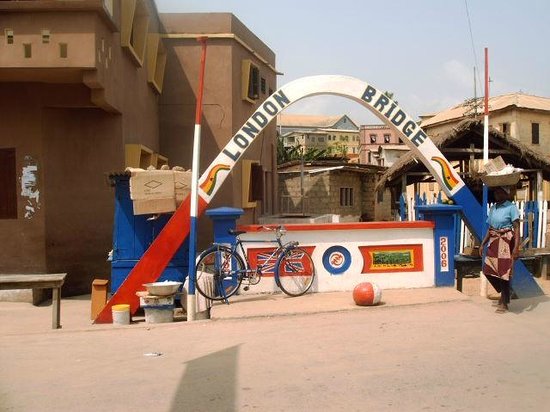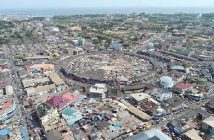It has been said by William Mutargh that, “at it’s best, preservation engages the past in a conversation with the present, over a mutual concern for the future.”
Sadly, that cannot be the case of one of the most sought after tourist sites in Ghana, as two decades ago the country lost the “London Bridge,” which was built in 1905 by the British Government.
The bridge served as a bond of good relationship between the residents in and around it’s locality and the British embassy to the extent that each year, mostly getting to the Ogua Fetu Afahye festival ( a festival celebrated by the people of Cape Coast) the embassy in collaboration with the residents, contributed towards its beautification.
Per it’s central position, the bridge served as a social standard for measuring social activities in the township which was usually described as ‘a town of beautiful nonsense’. It was also popular and held great impact for the people in the town.
The London Bridge in close similarity to the city that never sleeps (NewYork city), was usually known and accepted that when the last man at the London Bridge sleeps, then one is assured that the whole of Cape Coast is asleep.
The area with its accolade, “the beautiful nonsense”, had grown from strength to strength such that the youth had their own chief Nana Opoku, who at every Fetu Afahye festival dressed gorgeously and paraded through the principal streets of the town, followed by a large group of youths to make fun.
However, the Urban III project, an initiative by the world bank to aid in the development of urban countries to improve the provision of infrastructure and services in Conakry and secondary cities and to improve the financial and organizational management of municipalities, of which Ghana sought help from gave a devastating blow to the bridge and in its place a new one was constructed.
The people proposed that, the bridge was not totally bad and did not pose any threat or danger and a touch of renovation could have been undertaken without destroying the status quo.
More importantly, the people argued that, if anything at all, the British Embassy could have been invited to help carry out some rehabilitation work on the bridge, as it was done to the old British governor’s residence at the popular government gardens, near the Chapel Square, if the government of Ghana did not have the resources to renovate.
While majority of the residents were criticising the entire demolition of the almost 95 year-old historic bridge to make room for a new one, others were of the opinion that the bridge was too weak to withstand the present day heavy-duty vehicular movements.
How long will these historical sites continue to be neglected and eventually demolished. How long will the nation Ghana, continually “cry” for the growth of its tourism industry, when we are the very ones that are incapable of preserving some of these cultural and historical sites?
REFERENCES
1. Available online at, https://mobile.ghanaweb.com/GhanaHomePage/NewsArchive/The-Historic-London-Bridge-Of-Cape-Coast-Is-No-More-





